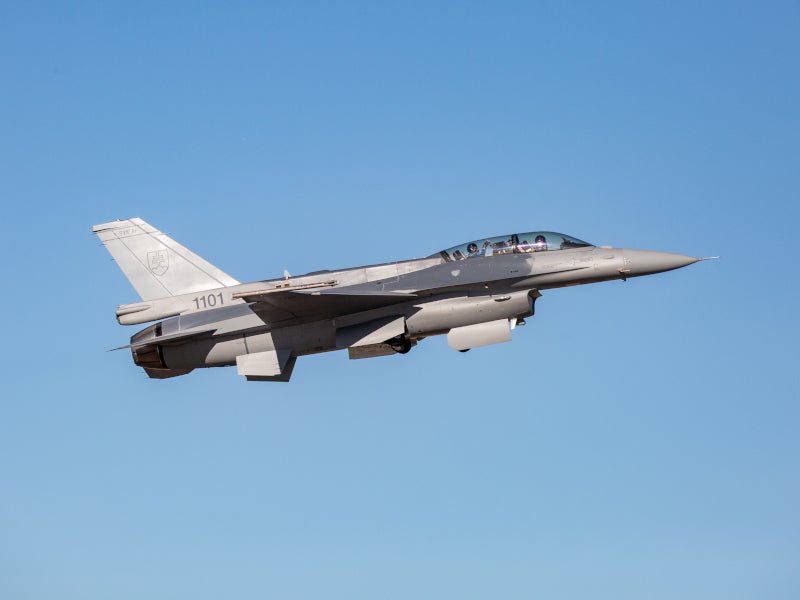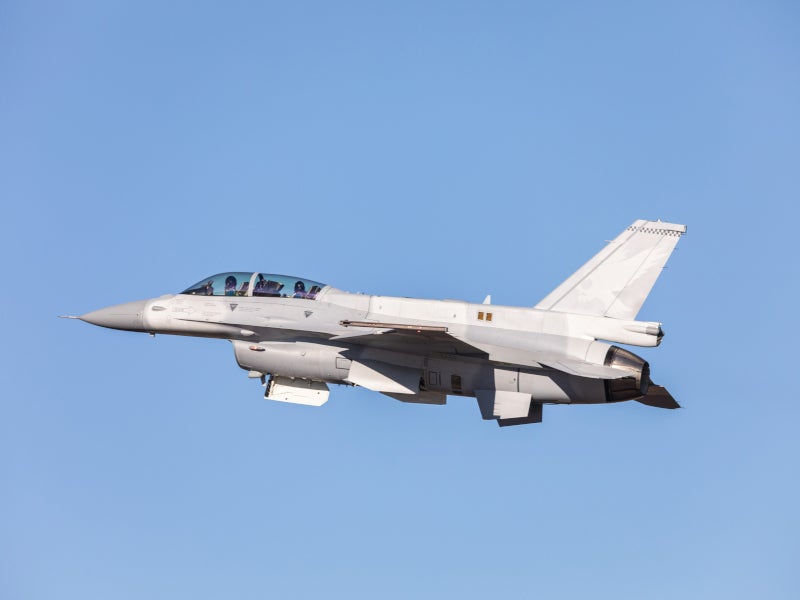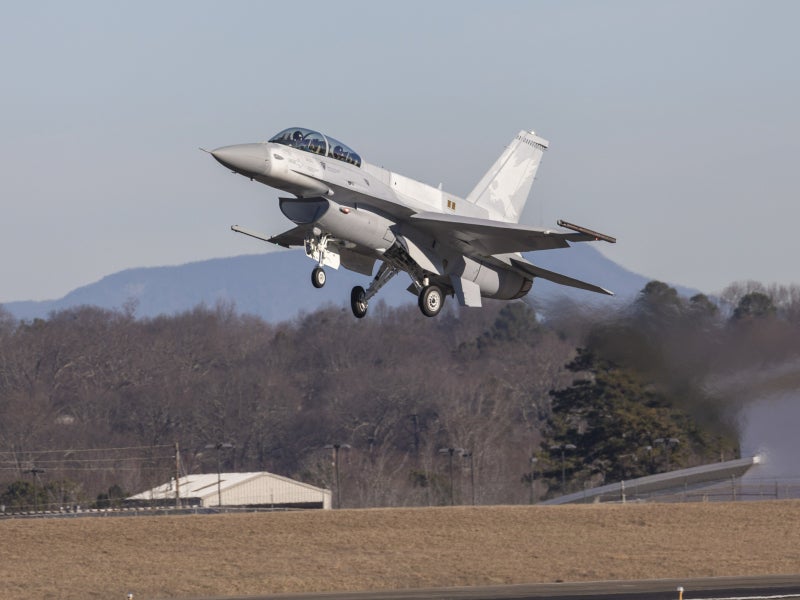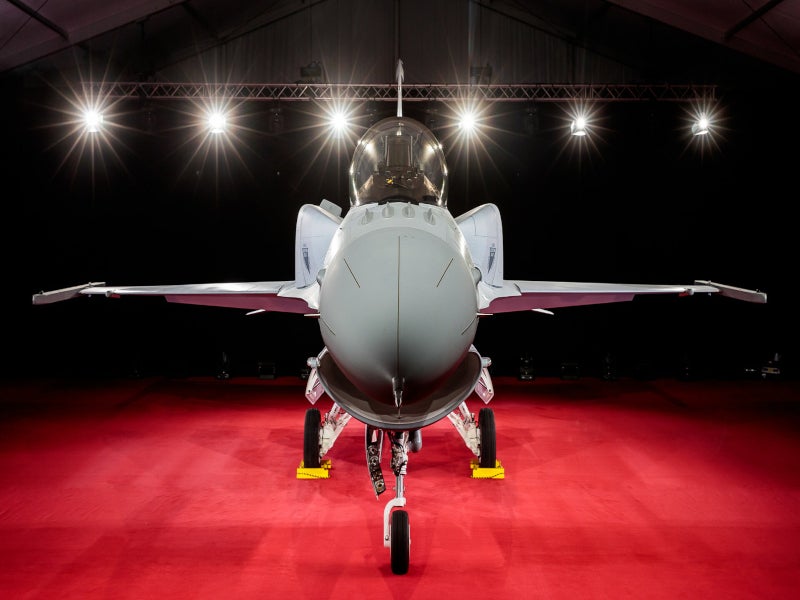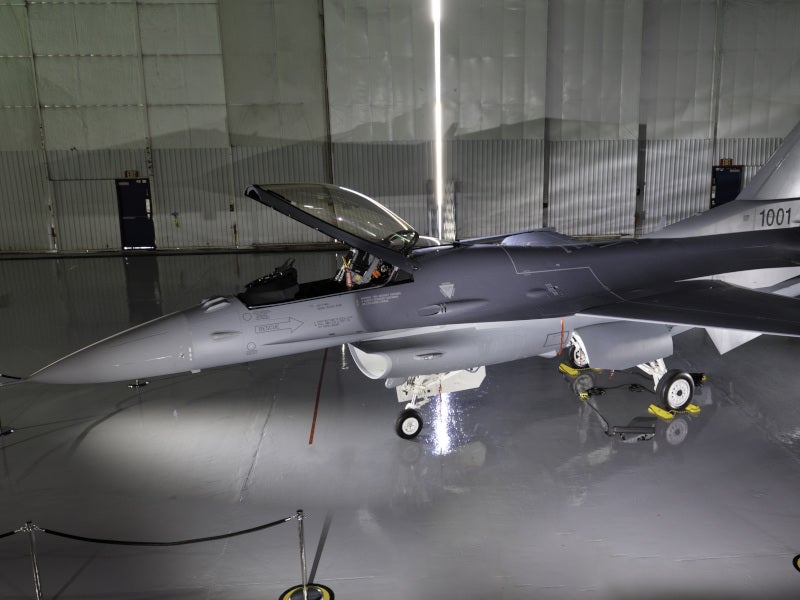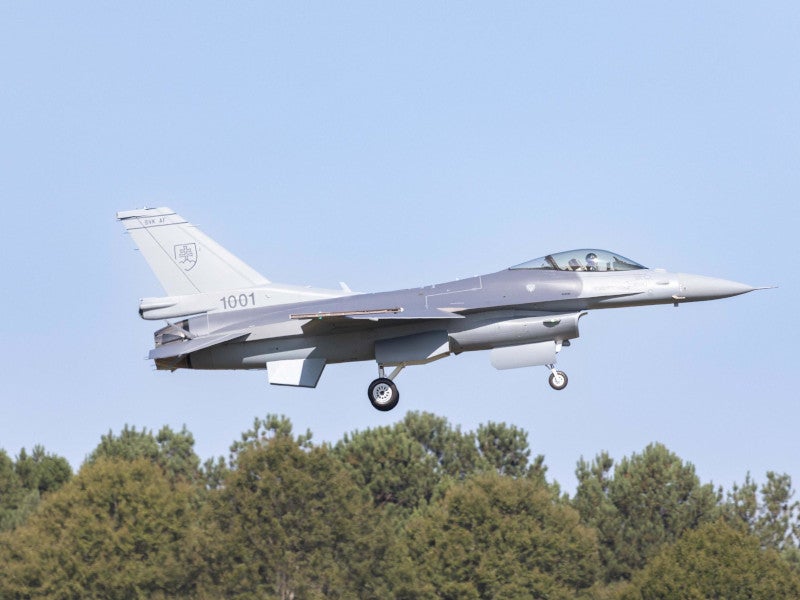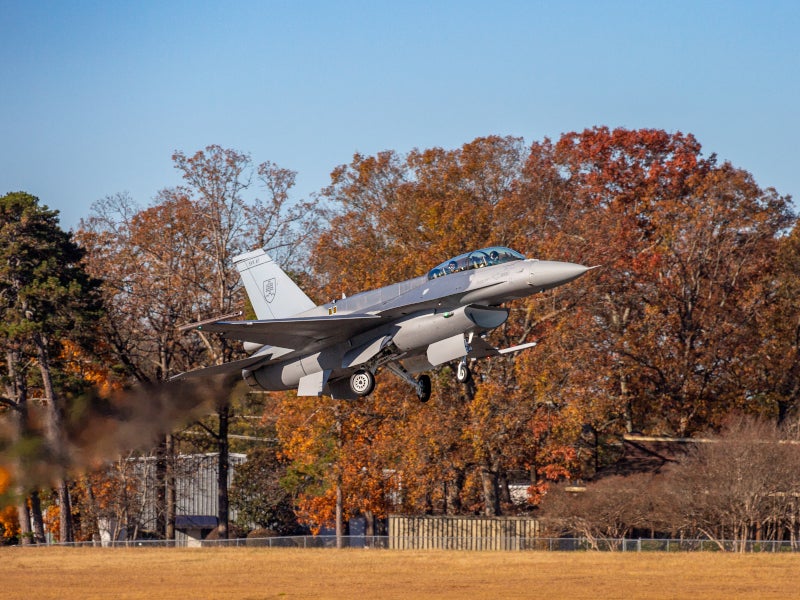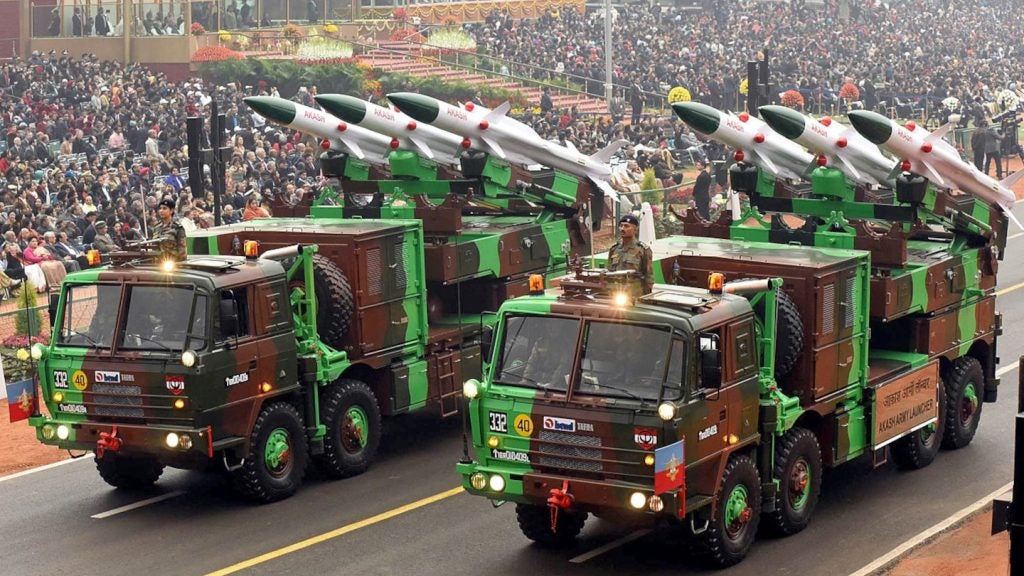The F-16V (Viper), also referred to as the F-16 Block 70/72, is the latest variant of the F-16 Fighting Falcon fourth-generation multi-role fighter aircraft manufactured by Lockheed Martin.
The aircraft integrates advanced capabilities as part of an upgrade package to better inter-operate with fifth-generation fighters, including the F-35 and the F-22.
The fighter jet can be deployed in the suppression of enemy air defence missions, air-to-ground and air-to-air combat, and deep interdiction and maritime interdiction missions.
The aircraft features airborne mission role-change capability and can detect and track time-critical, hard-to-find targets in all weather conditions. It also reduces operational costs for the users.
The F-16 aircraft is in service with the armed forces of the US and its allied nations, including Bahrain, Belgium, Chile, Denmark, Egypt, Greece, Indonesia, Iraq, Jordan, Morocco, Netherlands, Oman, Pakistan, Poland, Romania, the Republic of Korea, Singapore, Slovakia, Taiwan, Thailand, Turkey and the UAE.
The F-16 fleet has been continuously upgraded to improve its capabilities and effectiveness in advanced combat scenarios.
The structural and capability upgrades of the aircraft will ensure that the F-16 fleet remains operational until 2060 and beyond.
F-16V development
The F-16V jet fighter was unveiled at the Singapore Air Show in February 2012. The Viper configuration is available as a new production aircraft, while a components upgrade is also being offered for the existing F-16 versions.
Lockheed Martin received a $1.85bn contract from the US Government to upgrade 145 Block 20 F-16A/B aircraft for the Republic of China (Taiwan) Air Force in October 2012. The upgrades are based on the F-16 Viper version.
The integration of a new active electronically scanned array (AESA) radar on the Viper aircraft was concluded in August 2014.
In October 2015, Lockheed Martin displayed the F-16V cockpit demonstrator in Jakarta, Indonesia, for the Indonesian Air Force.
In February 2021, the first Hellenic Air Force F-16 upgraded to the Viper V setup reached the US for testing.
F-16 Block 70 took its first flight at Lockheed Martin’s facility in Greenville, South Carolina, in January 2023. It was the first of the 16 aircraft to be delivered to Bahrain. Lockheed Martin delivered the first F-16 Block 70 aircraft to Bahrain in March 2023.
Five other countries, including the US, the Philippines, Slovakia, Bulgaria and Greece, have selected F-16 Block 70/72 aircraft for their armed forces.
Cockpit and avionics of the F-16 Viper
The F-16V’s advanced glass cockpit incorporates an upgraded mission computer and state-of-the-art avionics, including colour multi-function displays, a large high-resolution centre pedestal display, a helmet-mounted cueing system and a high-volume, high-speed data bus.
The CPD enhances the situational awareness of the crew by supporting real-time processing and imaging of flight safety data. The F-16 Viper is also equipped with an upgraded, programmable display generator, a Link-16 theatre data link, identification friend or foe and HF/UHF/VHF radio communications.
The single, high-performance, modular mission computer on the F-16V is a replacement for the three original computers.
It provides higher computing power to the avionics and weapon systems, while offering improved situational awareness, air-to-air strike performances, accurate targeting and information capabilities.
The gigabit ethernet-based architecture enables the control of electronic warfare (EW) displays and avionics systems of the aircraft.
The advanced fighter jet is also fitted with precision GPS navigation and an automated ground collision avoidance system, which provides the pilot with alerts of an imminent collision with the ground and controls the aircraft to avoid a collision in case of the pilot’s unresponsiveness to visual cues.
Martin-Baker’s US18E ejection seat offers fifth-generation escape performance to the aircraft. The seat has a modular design for easy and low-cost maintenance. It includes a Martin-Baker electronic sequencer, neck protection device and head support panel with an IGQ6000 larger diameter parachute.
F-16V weapon systems
An F-16V can be armed with a range of air-to-air missiles (AAMs), including AIM-9 Sidewinder, Magic II and ASRAAM short-range AAMs, as well as AIM-7, Sky Flash and AIM-120 medium-range AAMs.
High off-bore-sight, infrared AAMs such as AIM-9X, Python IV, AIM-132 ASRAAM, and IRIS-T are also available.
The aircraft supports the integration of AGM-119/AGM-84/AGM-65G anti-ship missiles and AGM-65 Maverick air-to-ground tactical missile, as well as Paveway laser-guided bombs, GBU-15 bombs and wind-corrected munitions dispenser weapons.
In March 2021, L3Harris introduced the AN/ALQ-254(V)1 Viper Shield, an advanced all-digital EW suite specifically tailored for integration into the baseline configuration of F-16 Block 70/72 aircraft. Developed in partnership with Lockheed Martin, the EW suite will enhance the survivability and mission success of the aircraft.
Targeting and countermeasures of Viper fighter
The F-16V’s APG-83 AESA radar enables all-weather targeting and offers high-resolution detection and imaging of land-based targets. The phased array radar allows the simultaneous application of air-to-air and air-to-surface modes.
The onboard Sniper advanced targeting pod (ATP) gives high air-to-surface and air-to-air targeting capability to the F-16 Viper. It supports the launch of all laser-guided and GPS-guided weapons against multiple fixed and moving targets. The aircraft can be integrated with FLIR/laser system and reconnaissance and navigation pods. The Sniper ATP together with Legion-ES™ infrared search and track (IRST) system improves the situational awareness of the pilot and enhances warfighter survivability.
The Viper fighter is equipped with upgraded EW equipment and modern threat warning systems including jammers, threat warning receivers, electronic countermeasures equipment pods and chaff and infrared flare dispensers to defend against the most dangerous threats in complex battlefield scenarios.
F-16 Viper engine
The fighter jet is powered by a single Pratt & Whitney F100-PW-229 or a General Electric F110-GE-129 turbofan engine. The F100-PW-229 develops a thrust of 29,100lb, whereas the F110-GE-129 generates a power of 29,500lb.
The power plant provides the aircraft with a maximum speed of Mach 2 and a range of 1,740nmi.
F-16 Viper orders and deliveries
The US Air Force (USAF) awarded a foreign military sales (FMS) contract to Lockheed Martin for the upgrade of 134 F-16 aircraft to the F-16V configuration in November 2016.
Lockheed Martin received a $1.12bn contract from the US Government for the development of 16 F-16 Block 70 aircraft for the Royal Bahraini Air Force in June 2018. The Kingdom of Bahrain is the first customer to receive the new version of the F-16, which features advanced avionics, AESA radar and advanced weapons systems.
The Defense Security Cooperation Agency (DSCA) approved the $1.67bn sale of eight F-16 Viper fighter jets, weapons and training equipment to Bulgaria under the FMS programme.
The US State Department approved a possible $8bn sale of 66 F-16C/D Block 70 fighters and associated equipment in August 2019.
In June 2021, the DSCA approved the sale of F-16 Block 70/72 aircraft and related equipment for an estimated cost of $2.43bn to the Government of the Philippines.
Amid rising tensions with Turkey, Greece received the initial batch of F-16 Vipers for the Hellenic Air Force, under the $1.5bn F-16 modernisation programme, in September 2022. The aircraft is intended to increase Nato’s interoperability with fourth and fifth-generation fighter aircraft, enhancing the capability of allies to defend the country’s security interests.
In August 2023, the Hellenic Air Force (HAF) received the tenth upgraded F-16 jet in the Viper configuration.
Lockheed Martin successfully completed the maiden flight of the first F-16 Block 70 aircraft, destined for the Slovak Republic, in September 2023.
In January 2024, Lockheed Martin handed over the first duo of F-16 Block 70 jets to Slovakia.
Contractors involved
In December 2016, the Royal Danish Air Force (RDAF) contracted Stauder Technologies, a company specialising in targeting, geodetic, and communications systems, to upgrade the existing IDM 302 avionics boxes on the F-16s with HydeDM 302 VMF Modems.
Designed to meet Lockheed Martin F-16 specifications, the HydeDM 302 is driven by Stauder’s JECL messaging and peripheral management software and replaces IDM 302 with a form/fit/function+ compatibility.
This transition requires no alterations to aircraft wiring or Operational Flight Programs (OFPs) and instantly ensures aircraft interoperability with US and allied forces using Joint CAS (JCAS) digital messaging standards for digitally aided CAS (DACAS).
In September 2018, Tata Advanced Systems (TASL) and Lockheed Martin signed an agreement to commence production of F-16 wings in India for export, in support of the country’s ‘Make in India’ initiative.
In March 2021, Lockheed Martin contracted L3Harris Technologies to develop an advanced EW system for safeguarding the F-16 multi-role fighter aircraft from evolving radar and electronic threats on the global stage.
Lockheed Martin and Polish company WZL-2 entered into a service agreement to provide ongoing support for Polish F-16s in June 2021.
In January 2021, Northrop Grumman was chosen by the USAF to finalise the EW suite, which will replace the legacy EW systems on its F-16 fighter aircraft fleet.
The USAF contracted Northrop Grumman in May 2022 to advance the development of the AN/ALQ-257 Integrated Viper Electronic Warfare Suite (IVEWS) for developmental testing and complete hardware qualification.
Northrop Grumman conducted a series of hardware and software tests to ensure the readiness of IVEWS. In April 2023, the IVEWS completed US Air Force Laboratory Intelligence Validated Emulator (LIVE) testing and showed its ability to counter modern radio frequency (RF) threats.
In August 2023, Amentum received an $818m contract to support and modernise the US Navy’s F-16 fleet. Amentum will offer technical, sustainment, and logistics solutions for the F-16 aircraft stationed at the Naval Air Station (NAS) Fallon, Nevada.

